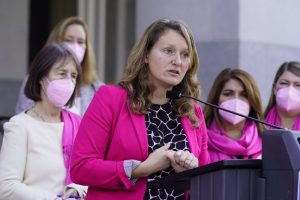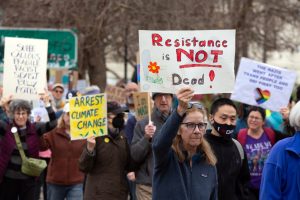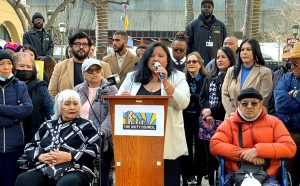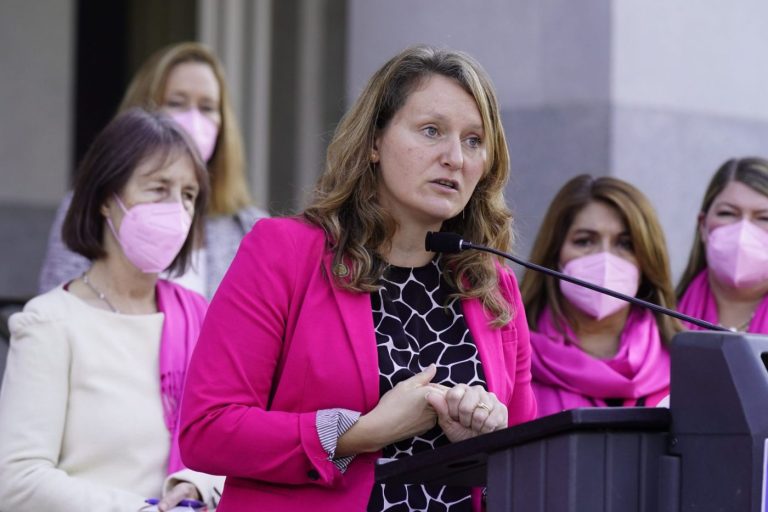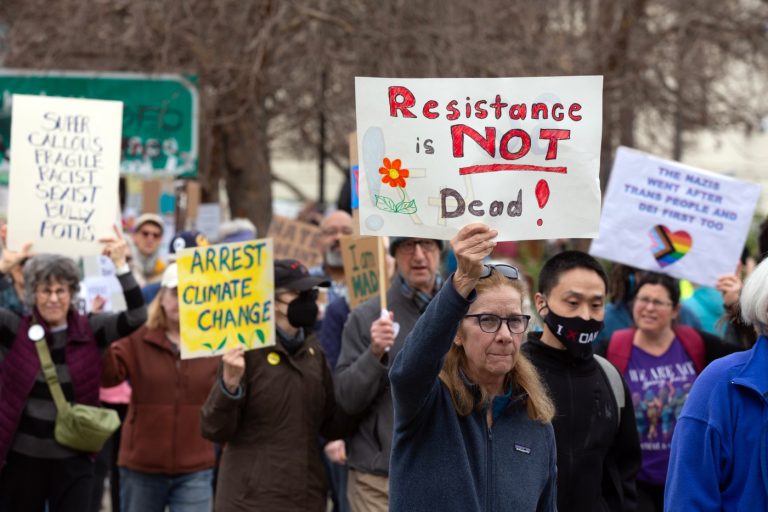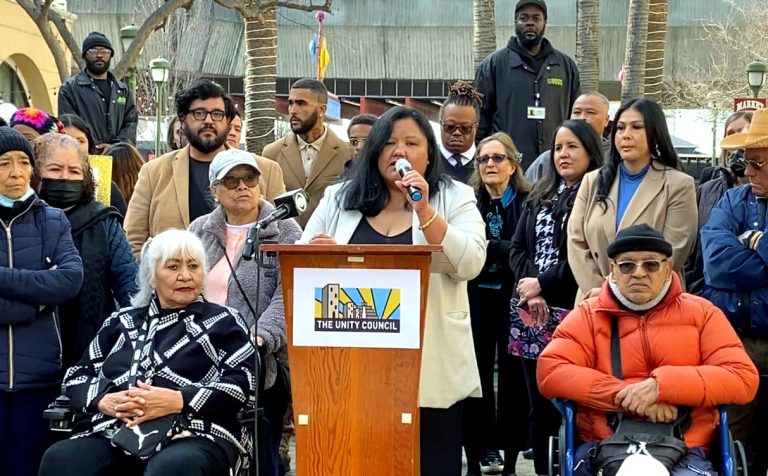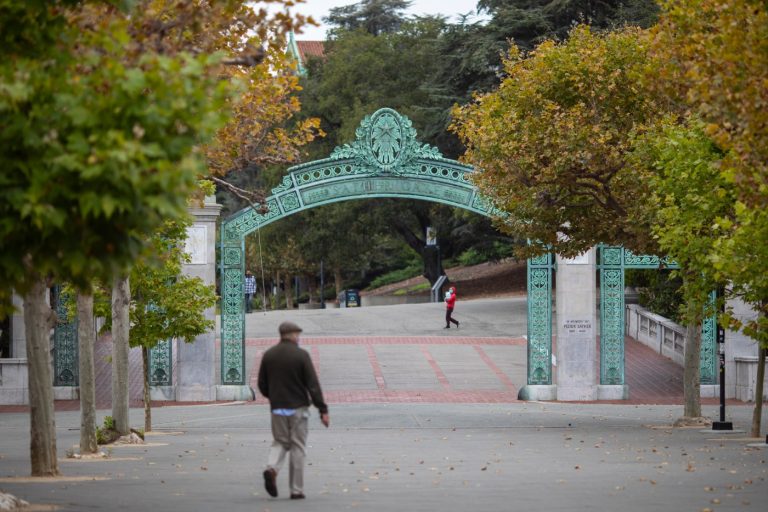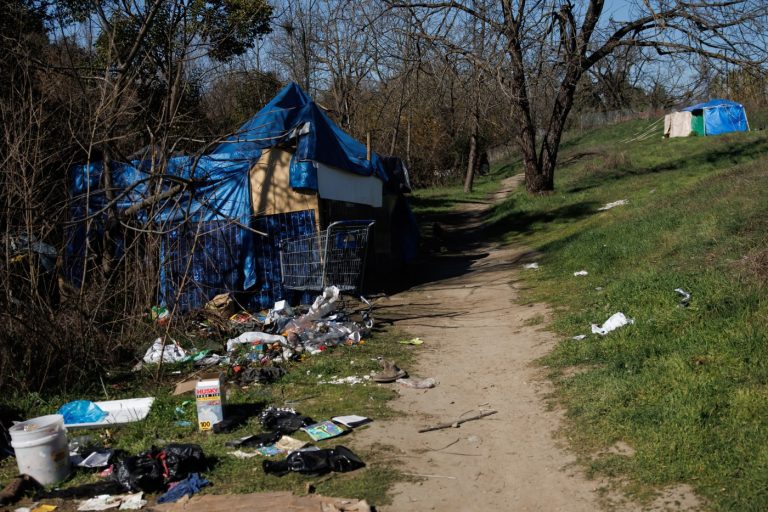With the San Jose District 3 special election less than two months away, candidates in the crowded field to replace disgraced former Councilmember Omar Torres have begun to roll out their policy platforms in hopes of winning the support of voters.
At a forum hosted by the San Jose Downtown Association and the San Jose Chamber of Commerce Wednesday, public safety, the homelessness crisis, and housing development remained among the top priorities for the five candidates who participated in the event.
“As I’ve been knocking on doors talking with voters, it’s clear that many folks in our community have lost trust in their local government, and rightfully so,” said Anthony Tordillos, an engineer and city planning commissioner running for the seat. “Housing is still much too expensive. Too many of our neighbors are living on the streets without shelter. Too many of our small businesses are struggling, and too many folks don’t feel safe in their own city.”
Tordillos, Gabby Chavez-Lopez, Irene Smith, Matthew Quevedo and Adam Duran participated in Wednesday’s forum, which is the first of several to take place over the coming weeks. Philip Dolan and Tyrone Wade — the two other candidates that qualified to appear on the ballot — did not take part in the event.
San Jose will hold a special election on April 8 in hopes of crowning a permanent representative for its downtown after Torres resigned in November due to child molestation charges. However, if none of the candidates surpass the 50% threshold, a runoff between the two highest vote-getters will take place on June 24.
Late last month, the City Council appointed engineer and businessman Carl Salas to temporarily fill the District 3 seat until a winner of the election emerges.
Smith — a pro tem judge and former longtime IBM employee who lost to Torres in the 2022 general election — has centered her policy platform around bigger, more cost-effective homelessness solutions, fiscal responsibility, pro-business incentives and improving resident input.
She said the city has put itself at a disadvantage by having too many core services and programs instead of making decisions based on a more defined priority list.
“This becomes a problem because we lack focus and we lack efficiency, and that all boils down to the budget and to the question about how we jump start downtown and make businesses work,” Smith said. “When we don’t focus on what our core services are … our quality of life is going to suffer.”
Chavez-Lopez, the CEO of the Latina Coalition of Silicon Valley, said that as a working mother raising her son in the district, she thinks about safety “every waking hour of my day.”
Chavez-Lopez said because of the diverse population in the city, a multi-prong approach is needed to address the city’s housing and homelessness issues. She added that the city lacks the resources and expertise to adequately address homelessness and instead needs to think creatively and collaboratively with the county and other agencies about solutions, pointing to the Santa Clara Valley Water District’s willingness to offer land for interim housing as an example.
“It’s time to get innovative, and it’s in times like this that we need to really step up and think differently and move differently because we can’t expect (to keep) doing the same thing and to get different results,” Chavez-Lopez said.
Quevedo, the deputy chief of staff for San Jose Mayor Matt Mahan, said the issues surrounding homelessness and public safety have been around for decades but that strong leadership is needed to push a policy agenda that delivers impact.
He noted that the city needs to hire an additional 500 police officers to staff the department fully. Without doing so, the city will continue to miss its goal of responding to calls for service.
As for addressing homelessness, he said he was in lockstep with Mahan and the city’s housing department, who have explored what it would take to build out the shelter system in an effort to end unsheltered homelessness. They have also asked the City Council to consider a policy change on Measure E funds that would allow greater flexibility to use those dollars on interim housing solutions versus affordable housing developments.
“The reason we’ve been stuck on a lot of this malaise is because of the politics that distracts us from issues that a charter city government cannot do,” Quevedo said. “We need to accelerate the pace, and we need that majority pushing for interim housing solutions to get people off the streets faster.”
Duran, a retired law enforcement and corrections officer, offered the most distinct answer for addressing homelessness by noting how much the state has spent on solutions without making a dent in the problem.
“The root of the problem is we need rehabilitation centers,” Duran said. “We need to have mental health facilities open up again. Housing a person in addiction to me and not getting to the root is the antithesis of compassion.”
Smith said she agreed with the mayor’s approach, including redirecting Measure E funds, and has proposed larger, congregate shelters like those found in other U.S. cities as a quicker, more cost-effective alternative to getting residents off the streets.
“We are playing whack-a-mole with misery and homelessness, and we need to stop fiddling with the edges of the toggle and face it head-on,” Smith said.
Noting the question asked to voters, Chavez-Lopez and Tordillos did not agree with a permanent shift of Measure E dollars.
Related Articles
New model puts new potential price tag on San Jose’s cost to end unsheltered homelessness
San Jose faces potential $60 million shortfall in upcoming fiscal year
First phase of San Jose’s St. James Park revamp close to becoming reality
San Jose eyes reforms to combat abandoned shopping cart problem
San Jose: Ex-councilmember Omar Torres working toward plea in child sex abuse case, attorney says
Tordillos recalled a conversation with a homeless resident who had stayed in an interim shelter before unsuccessfully applying for affordable housing due to the shortage. Tordillos said the person was kicked out of the shelter and back onto the streets, which put him in a worse position than where he started.
“I think it is important that we balance investments in immediate solutions to shelter unhoused people, while also making sure that we are building our affordable housing capacity over time,” Tordillos said. “I also think that this is really an issue of voter trust. When voters voted on Measure E, they were voting on a combination of affordable housing and homelessness prevention, and it’s critical we maintain that promise.”

